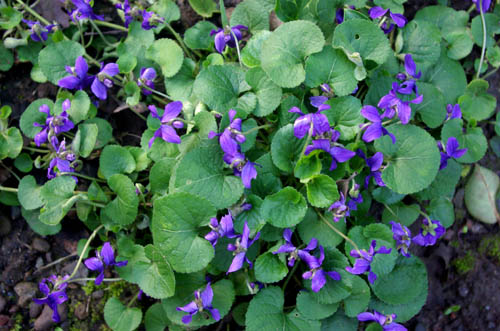Long before writing began, plants have been serving medicinal purposes in both Egyptian and Chinese ways of life. In the early 1800's, chemists began to extract plant ingredients as healing drugs and eventually, man-made drugs replaced plant based ones.
As a vegan, I find this very interesting because it seems like technology took us away from a vegan form of healing. In the past 20 years, herbal remedies have been increasing as a result of public dissatisfaction with prescription medications.
This past weekend, I went on an Edible and Medicinal Plant Walk that was sponsored by the Rivanna Conservation Society. I’ve been to a sugar-addict class, a vegetarian cooking class, and even had a nutritionist, but never have I encountered herbal remedies. In the end, the walk was a lot of fun and very informative. The cool part of it all is that you can find these plants in your backyard! Here are my notes:
Flower
|
How to use and benefits
|
Picture
|
Plantain
|
Take leaf, chew up and can place on bee sting, mosquito bites,
chiggers. Antiseptic and healing.
|
|
Cinquefoil
|
Both the roots and the herb are antispasmodic (controls muscle
spasms), astringent (draws tissue together) and febrifuge (reduces fever). Young
leaves – raw are a useful addition to salads
|
|
Blackberry
|
Fruit edible. Leaves and roots are astringent. Can be used on burns
and poison ivy.
|
gcdn.com/www.slashfood.com/media/2008/08/blackberries--leaves-425.jpg |
JapaneseHoney Suckle
|
Flowers are used for making honeys and syrups. Leaves can be toxic
but hard to absorb by human body. The stems and flower buds are alterative,
antibacterial, anti-inflammatory. Helps with sore throat
|
|
(Stag’s Horn) Sumac
|
Fruit, when cooked can be made into pies and juice. Very sour. Bark
is antisepctic, astringent, tonic (refresher)
|
|
Pine Tree
|
Edible inner bark. Needles are good source of Vitamin C, just don’t
swallow it. Tea made of needles can help with lung congestion.
|
|
Yarrow
|
particularly valuable for treating wounds, stopping the flow of
blood, treating colds, fevers, kidney diseases, menstrual pain. Yarrow, elder and peppermint are a classic
herbal tea combination used to treat colds.
|
|
Ox-eye Daisy
|
Edible in salads. The plant has been employed successfully in the
treatment of whooping cough, asthma and nervous excitability
|
|
Red Clover
|
Can be put into salad. A delicate sweet herb tea is made from the
fresh or dried flowers. The dried leaves impart a vanilla flavor to cakes.
|
|
Poke Weed
|
Mature leaves are poisonous. Leaves must be cooked before eaten.
Berry’s are red and used as dye. Used in the treatment of diseases related to
a compromised immune system
|
|
Lemon Balm
|
Leaves can be eaten raw or cooked. Are used in flavoring alcoholic
beverages with a lemony flavor. Called “gladdening herb”
|
|
Stinging Nettle
|
Only use young leaves. they are a very nutritious food that is easily
digested and is high in minerals (especially iron) and vitamins . Flax-like
fiber obtained from stem.
|
|
Wild Violet
|
Edible. Assists
a other herbs in performing their action. Helps with varicose veins. caution is advised, the yellow flowers of this species can make you sick. |
|
Mimosa
|
Antidepressant inner bark. Yellow dye obtained from flowers. Pollen
is very soluble in water.
|
|
Redbud
|
Abundant purple flowers in late spring. Flowers have nice refreshing
acid taste, the flowers are rich in vitamin C and make a pleasant addition to
salads
|
|
Hawthorn
|
Fruit is normally used for making jams and preserves. Medicinal heart
tonic. Tree has distinctive spikes.
|
|
Day Lilies
|
An asparagus or celery substitute. An excellent sweet tasting
vegetable. Can be used as laxative.
|
|
Autumn Olive
|
Fruit raw or cooked are juicy and pleasantly acid, they are tasty raw
and can also be made into jams, preserves. Stimulant in treatment of coughs.
|
|
Greenbrier
|
Root can be dried and ground into a powder. Can eat
tendrils. Used in treatment of urinary complaints.
|
|
Oak tree
|
Seed = acorns are edible. Used as antiseptic and astringent
properties.
|
|
Dandelion
|
A pleasant tea is made from the flowers. Everything is edible except
stem. Nutritious.
|
|
Wild Lettuce
|
Can eat leaves as salad. Sap can be used as sedative.
|
|
Wood Sorrel
|
Resembles a clover but has heart-like leaves. Lemony taste. Can be
used in soups and salads. Leaves can relieve pain, rich in Vitamin C.
|
|
Yucca
|
Looks like a giant asparagus. “food, rope, fire, and soap”. Stem
cooked and used like asparagus.
|
|
Elderberry
|
Purple berries. Antiviral in vodka. Can make elderberry syrup against
cold and congestion. Leaves = poisonous.
|
|
Passion Flower
|
Fruit can be eaten raw or cooked. Very fragrant. Increases sleep
latency so you will stay asleep.
|
























%20Honeysuckle%20Family.jpg)

Lots of great information
ReplyDeleteThanks! I found some Wood Sorrel in my yard today! Haha
ReplyDelete